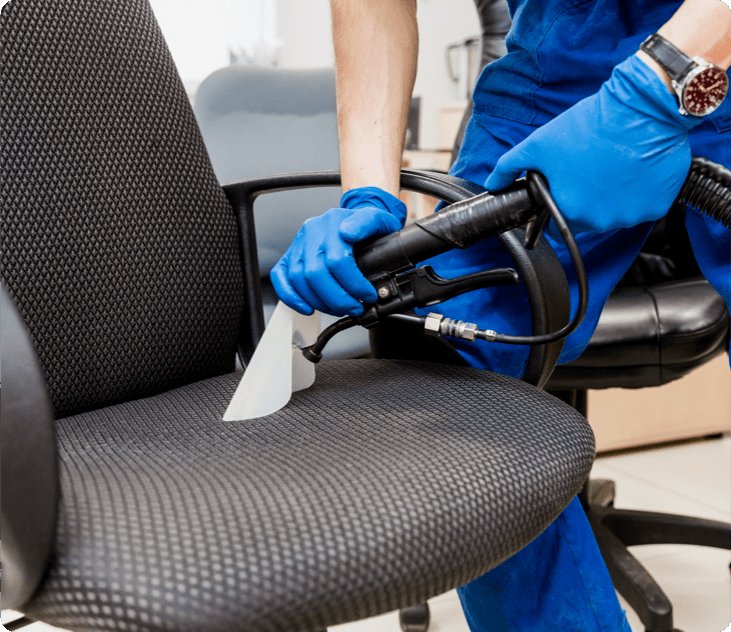Top Trends in Commercial Furniture Cleaning for Businesses

In today’s fast-paced, image-conscious business world, maintaining a clean and professional environment is more than just good practice—it’s a necessity. One aspect that’s often overlooked but critically important is the cleanliness and upkeep of office furniture. From executive chairs to reception area sofas, commercial furniture is an investment that should be properly cared for. That’s where commercial furniture cleaning comes in.
In recent years, the landscape of commercial furniture cleaning has evolved dramatically. What used to be a straightforward janitorial task has transformed into a specialized service involving cutting-edge technology, sustainability efforts, and even health-focused strategies. Below, we explore the top trends that are currently shaping the industry and helping businesses make smarter, cleaner choices.
1. Eco-Friendly Cleaning Solutions
With a growing emphasis on sustainability, eco-conscious commercial furniture cleaning has become a leading trend in the industry. Businesses are increasingly looking for green cleaning options that reduce environmental impact while ensuring high cleaning standards.
Modern service providers now offer biodegradable, non-toxic, and low-VOC (volatile organic compound) cleaning solutions that are safe for employees, clients, and the planet. These solutions are particularly important in workspaces that prioritize wellness or aim for certifications such as LEED (Leadership in Energy and Environmental Design).
Why it matters:
Eco-friendly products contribute to better indoor air quality, reduce exposure to allergens, and align with corporate social responsibility (CSR) goals.
2. Specialized Fabric and Material Care
The days of using the same cleaner for every piece of furniture are long gone. Modern offices are filled with a variety of materials—leather, suede, mesh, microfiber, and high-end textiles. Each of these requires unique cleaning techniques and products to preserve their look and feel.
Many commercial furniture cleaning companies are now investing in training and equipment tailored to handle delicate or specialty fabrics. This not only ensures a more thorough clean but also extends the life of your furniture.
Why it matters:
Proper material-specific cleaning prevents damage and fading, protecting your long-term investment in office furnishings.
3. Health and Hygiene Integration
The pandemic accelerated a trend that’s here to stay: health-focused cleaning. While surface-level aesthetics remain important, businesses are now prioritizing deep sanitization and disinfection as part of their regular commercial furniture cleaning routines.
This means using steam cleaning technology, HEPA-filtered vacuums, and EPA-approved disinfectants that eliminate bacteria, viruses, and allergens. Many providers also offer antimicrobial treatments that create a protective barrier on furniture surfaces, especially in high-touch areas.
Why it matters:
A healthier office environment means fewer sick days, improved employee morale, and a more welcoming atmosphere for visitors and clients.
4. Smart Scheduling and On-Demand Services
Flexibility and convenience have become top priorities in workplace maintenance. As a result, businesses are leaning toward on-demand commercial furniture cleaning rather than rigid service contracts.
Some advanced cleaning providers now offer app-based booking systems and customizable schedules that allow businesses to request services when needed—before or after major meetings, events, or seasonal cleanups.
Why it matters:
Convenient scheduling ensures minimal disruption to the workday and allows businesses to stay in control of cleaning frequency and budget.
5. Data-Driven Maintenance Plans
In the age of data and analytics, commercial furniture cleaning is becoming more predictive and strategic. Some companies now offer data-driven maintenance plans that assess wear patterns, usage levels, and fabric conditions to recommend cleaning frequencies and techniques.
By analyzing foot traffic, furniture usage, and historical cleaning results, service providers can help businesses create efficient long-term cleaning strategies that maximize cleanliness without overpaying.
Why it matters:
Predictive maintenance helps avoid costly repairs or replacements and ensures that cleaning efforts are targeted and efficient.
6. Integration with Facility Management Systems
As businesses modernize their operations, there’s a growing trend toward integrating commercial furniture cleaning into broader facility management software systems. This allows office managers to track cleaning schedules, receive service alerts, manage invoices, and even monitor performance metrics—all in one place.
These systems offer transparency and control over the cleaning process, making it easier to ensure consistent quality and compliance with industry standards.
Why it matters:
Streamlining facility services saves time, reduces administrative headaches, and ensures that cleaning isn’t overlooked in busy office environments.
7. Sustainable Equipment Upgrades
Not only are cleaning products going green—so is the equipment. Many commercial furniture cleaning companies are transitioning to energy-efficient steam cleaners, battery-powered vacuums, and noise-reducing machines that are ideal for office settings.
These tools are designed to be lightweight, portable, and environmentally responsible, enabling cleaners to work more effectively without disrupting the workplace.
Why it matters:
Cleaner technology means cleaner furniture—with less impact on energy use, workplace comfort, and environmental footprint.
Final Thoughts
The world of commercial furniture cleaning is no longer just about removing dust and stains. It’s about promoting health, aligning with corporate sustainability goals, enhancing workplace aesthetics, and protecting valuable assets.
What's Your Reaction?


















.jpg)
